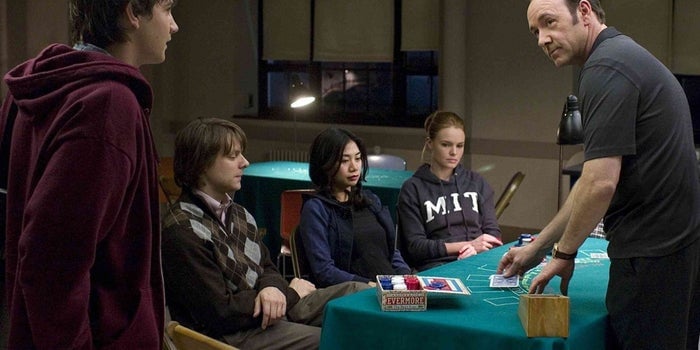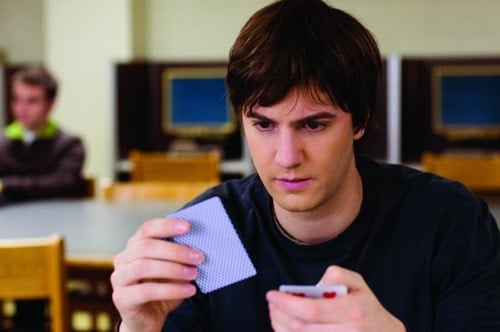The Legendary Rise of the MIT Blackjack Team
The adage "the house always wins" has long defined casino gambling-except for one groundbreaking group who proved otherwise. For over a decade, the MIT Blackjack Team, composed mostly of students and alumni from the Massachusetts Institute of Technology, used mathematics and teamwork to outwit casinos at their own game. Their unprecedented success would become the subject of Hollywood movies and bestselling books, forever cementing their legacy as the group that truly beat the house.

The Mathematics Behind Beating Blackjack
The foundation of the MIT blackjack team’s strategy originated from Edward Thorp, an MIT math professor who, in the 1950s, devised a card counting system using early computers. Thorp demonstrated that with keen observation and mental calculation, players could tilt the odds in their favor using card counting methods. This later inspired the "hi-lo" counting method that the team would master and refine.
Card counting is entirely legal when done mentally, although casinos frown on it and may bar skilled counters. Laws in Nevada and elsewhere prohibit any external devices or tools, but memorization and calculation alone remain within legal bounds.
The basic Hi-Lo system assigns these values to cards:
- Cards 2 through 6 (low cards): +1
- Cards 7 through 9 (neutral): 0
- 10s, face cards, and Aces (high cards): -1
Players keep a running count as cards are dealt. When the count becomes high (indicating more high cards remain in the deck), the odds shift in favor of the player, signaling it’s time to increase bets.
Formation and Key Figures of the Team
In the early 1980s, a group of MIT students decided to leverage card counting as more than just an academic exercise. The pivotal meeting happened when JP Massar met Bill Kaplan, a successful professional gambler and MIT graduate. By then, Kaplan had already turned an initial $1,000 bankroll into $35,000 through disciplined play in Las Vegas.
With Kaplan's experience, the team became far more organized. Recruitment involved rigorous testing, requiring new prospects to deliver near-perfect play across multiple practice rounds before being accepted. Initially, a group of ten pooled $89,000 and doubled that in their first ten weeks.

How the MIT Team’s Strategy Worked
The team's method extended well beyond basic card counting. The group operated as a business, complete with investors, management protocols, and professional training. Recruits often joined via campus flyers or word of mouth, but faced a formidable trial phase that only the best could survive.
By 1984, the team grew to 35 players, and by the end of the decade, more than 70 individuals had participated in some capacity. Their corporate-like operation, Strategic Investments, was launched in 1992, capitalizing it with $1 million and further formalizing their efforts.
A hallmark of their strategy was their coordinated play, which often incorporated three assigned roles:
- Spotter: Monitored the tables with small bets, keeping the count and signaling others when conditions were favorable.
- Controller: Double-checked the count and made small bets to further confirm accuracy.
- Big Player: Entered with large bets only when the count was optimal, minimizing detection while maximizing potential winnings.
These meticulously coordinated attacks allowed up to 30 team members to play simultaneously in various casinos worldwide.

Kaplan described their structure as more disciplined than many traditional businesses, with exhaustive training, regular performance assessments, and strict procedures for entering and leaving the table.
Confrontation with the Casinos and the End of an Era
The team’s consistent success inevitably drew the attention of casino security. By cross-referencing player addresses, a private investigator tracked the group’s activities back to Cambridge, Massachusetts. Several members were eventually identified and publicly blacklisted from casinos.
In late 1993, Strategic Investments dissolved, distributing earnings to players and investors. Meanwhile, casinos responded by shuffling decks more frequently and implementing technology and training to spot card counters-making effective large-scale card counting increasingly difficult, especially in the digital age.
How Much Did the MIT Blackjack Team Win?
Accurate figures remain a mystery due to the secretive nature of operations. While card counting itself is not infallible, experts believe a player can gain between 2% and 4% edge over the casino when executed correctly. Some estimates suggest the team’s cumulative winnings may have reached over $10 million, though this figure can’t be definitely confirmed. Individual swings could be dramatic: one Super Bowl weekend reportedly saw a $500,000 win, while their biggest single loss was about $130,000.
The Legacy and Later Careers of Team Members
Following the closure of Strategic Investments, a few members continued pursuing card counting with more advanced approaches and tighter recruitment, though by 2000 most had left professional blackjack behind. Bill Kaplan shifted to investing in real estate and business ventures, finding a less stressful way to profit. John Chang, another key figure, still frequents casinos, often in disguise to avoid being recognized.
Mastering Card Counting: Is It Still Possible Today?
Today, card counting remains possible but is significantly more challenging due to enhanced casino security and frequent deck shuffling-especially in online settings where digital shuffling is instant. Still, dedicated learners can practice using card counting trainers to hone their skills and mental math.
To effectively count cards in a real casino, you’ll need:
- Strong memory and focused attention
- Plenty of practice and discipline
- Enough bankroll to withstand volatility
- Awareness of the legal and practical risks involved
While the MIT Team’s large-scale victories are unlikely to be repeated, their story stands as proof that preparation, teamwork, and mathematics can-at least temporarily-tip the odds against the house.
Further Reading and Sources
Discover more about the fascinating journey and members of the MIT Blackjack Team from these reputable sources:













